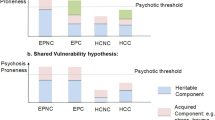Abstract
The utility of several measures of saccadic and smooth pursuit eye movements as benzodiazepine pharmacodynamic measures was explored in 24 psychiatrically and medically healthy control subjects. Measures of sedation and memory impairment were also included. Subjects received four logarithmically increasing doses of intravenous diazepam at 15-min intervals on 1 day resulting in monotonically increasing plasma diazepam levels, and placebo on another day in random order 1 week apart. Measures were collected twice at baseline, once after each dose of diazepam/placebo and twice more, 15 and 30 min after the last dose. Peak saccadic velocity and smooth pursuit gain showed the greatest overall and dose-dependent drug effect among eye movement measures. Although effect sizes at the highest dose for memory impairment and self-rated sedation were comparable to these two measures, reliability (i.e., placebo-day fluctuation) with these measures was considerably poorer. Loglinear pharmacodynamic modeling was used to calculate the effective dose (ED30) or concentration (EC30) required to reduce saccadic velocity or pursuit gain by 30%. Almost all (23/24) subjects had linear and easily interpretable plots for saccadic velocity, while a majority (19/24) of subjects had interpretable plots for smooth pursuit gain. The distribution of ED30 and EC30 values showed a wide range of sensitivities to diazepam. These findings suggest that saccadic velocity and smooth pursuit gain are sensitive, reliable, quantitative benzodiazepine pharmacodynamic measures.
Similar content being viewed by others
References
Aschoff CJ (1968) Veränderungen rascher Blickbenegungen (saccaden) beim Menschen unter diazepam (valium). Arch Psychiatr Nervenkr 211:325–332
Ball DM, Glue P, Wilson S, Nutt DJ (1992) Pharmacology of saccadic eye movements in man (1) effects of the benzodiazepine receptor ligands midazolam and flumazenil. J Psychopharmacol (in press)
Bittencourt PRM, Wade P, Smith AT, Richens A (1981) The relationship between peak velocity of saccadic eye movements and serum benzodiazepine concentration. Br J Clin Pharmacol 12:523–533
Blom MW, Bartel PR, de Sommers K, Van der Meyden CH, Becker PJ (1990) The effects of alprazolam, quazepam and diazepam on saccadic eye movements parameters of psychomotor function and the EEG. Fundam Clin Pharmacol 4:653–661
Bond AJ, Lader M (1974) The use of analogue scales in rating subjective feelings. Br J Med Psychol 47:211–218
Bond A, Lader M (1983) Correlations among measures of response to benzodiazepines in man. Pharmacol Biochem Behav 18:295–298
Brand R, Saunders J, Stewart-Jones J, Richens A (1974) Effect of diazepam on oculomotor balance. Br J Clin Pharmacol 1:335–336
Dingemanse J, Danhof M, Breimer DD (1988) Pharmacokinetic-pharmacodynamic modeling of CNS drug effects: an overview. Pharmacol Ther 38:1–52
Ellinwood EH Jr., Heatherly DG, Nikaido AM, Bjornsson TD, Kilts C (1985) Comparative pharmacokinetics and pharmacodynamics of lorazepam, alprazolam and diazepam. Psychopharmacology 86:392–399
Gentles W, Thomas EL (1971) Commentary. Effect of benzodiazepines upon saccadic eye movements in man. Clin Pharmacol Ther 12[4]:563–574
Ghoneim MM, Hinricks JV, Mewaldt P (1984) Dose-response analysis of the behavioral effects of diazepam: I. Learning and memory. Psychopharmacology 82:291–295
Greenblatt DJ, Ochs HR, Lloyd BL (1980) Entry of diazepam and its major metabolite into cerebrospinal fluid. Psychopharmacology 70:89–93
Greenblatt DJ, Harmatz JS, Shader RI (1991) Clinical pharmacokinetics of anxiolytics and hypnotics in the elderly: therapeutic considerations. Clin Pharmacokinet 21:165–177; 262–273
Griffiths AN, Marshall RW, Richens A (1984) Saccadic eye movement analysis as a measure of drug effects on human psychomotor performance. Br J Clin Pharmacol 18:73s-82s
Henn V, Hepp K, Vilis T (1989) Rapid eye movement generation in primate physiology, pathophysiology, and clinical implications. Rev Neurol 145:540–545
Hofferberth B (1986) Saccadic eye movements as a measure of residual effects: temazepam compared with other hypnotics. Acta Psychiatr Scand 74[Suppl 332]:105–111
Hommer DW, Matsuo V, Wolkowitz O, Chrousos G, Greenblatt DJ, Weingartner H, Paul S (1986) Benzodiazepine sensitivity in normal human subjects. Arch Gen Psychiatry 43:542–551
Jurgens R, Becker W, Kornhuber HH (1981) Natural and drug-induced variations of velocity and duration of human saccadic eye movements: evidence for a control of the neural pulse generator by local feedback. Biol Cybern 39:87–96
Leigh RJ (1989) The cortical control of ocular pursuit movements. Rev Neurol 145:605–612
Leigh RJ, Zee DS (1983) The neurology of eye movements. F. A. Davis Company, Philadelphia
Nikaido EH, Ellinwood EH Jr, Heatherly DG, Dubow D (1987) Differential CNS effects of diazepam in elderly adults. Pharmacol Biochem Behav 27:273–281
Norris H (1971) The action of sedatives on brain stem oculomotor systems in man. Neuropharmacology 10:181–191
Rothenberg S, Selkoe D (1981) Specific oculomotor deficit after diazepam. I. Smooth pursuit eye movements. Psychopharmacology 74:237–240
Roy-Byrne PP, Uhde TW, Holcomb HH, King AK, Thompson K, Weingartner H (1987) Effects of diazepam on cognitive processes in normal subjects. Psychopharmacology 91:30–33
Roy-Byrne PP, Cowley DS, Greenblatt DJ, Shader RI, Hommer D (1990) Reduced benzodiazepine sensitivity in panic disorder. Arch Gen Psychiatry 47:534–538
Salonen M, Aantaa E, Hovi-Viander, Kanto J (1986) A comparison of the soft gelatin capsule and the tablet form of temazepam. Acta Pharmacol Toxicol 58:49–54
Tedeschi G, Smith AT, Dhillon S, Richens A (1983) Rate of entrance of benzodiazepines into the brain determined by eye movement recording. Br J Clin Pharmacol 15:103–107
Tedischi G, Quattrone A, Bonavita V (1986) Saccadic eye movements analysis as a measure of drug effect on central nervous system function. Ital J Neurol Sci 7:223–231
van der Meyden CH, Bartel PR, Sommers DK, Blom M, Pretorius LC (1989) Effects of clobazam and clonazepam on saccadic eye movements and other parameters of psychomotor performance. Eur J Clin Pharmacol 37:365–369
Author information
Authors and Affiliations
Rights and permissions
About this article
Cite this article
Roy-Byrne, P.P., Cowley, D.S., Radant, A. et al. Benzodiazepine pharmacodynamics: utility of eye movement measures. Psychopharmacology 110, 85–91 (1993). https://doi.org/10.1007/BF02246954
Received:
Revised:
Issue Date:
DOI: https://doi.org/10.1007/BF02246954




